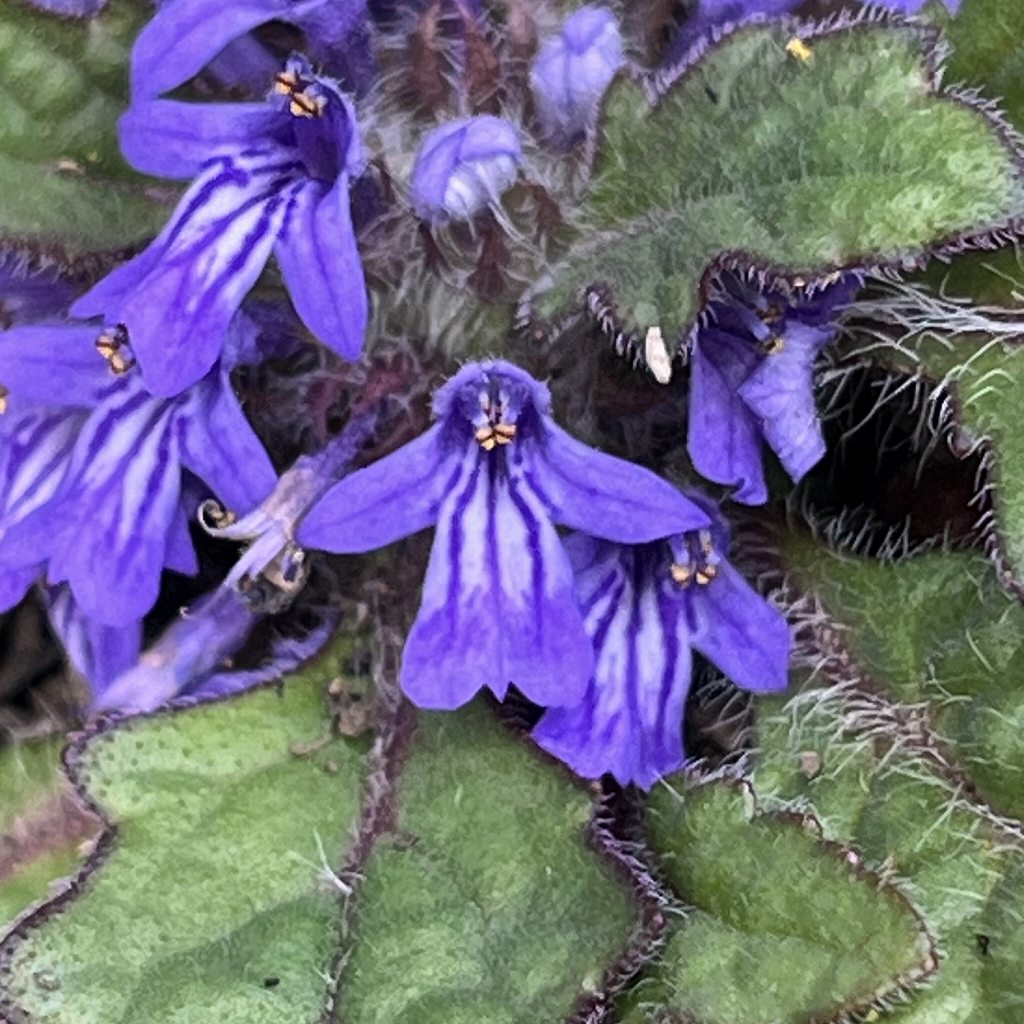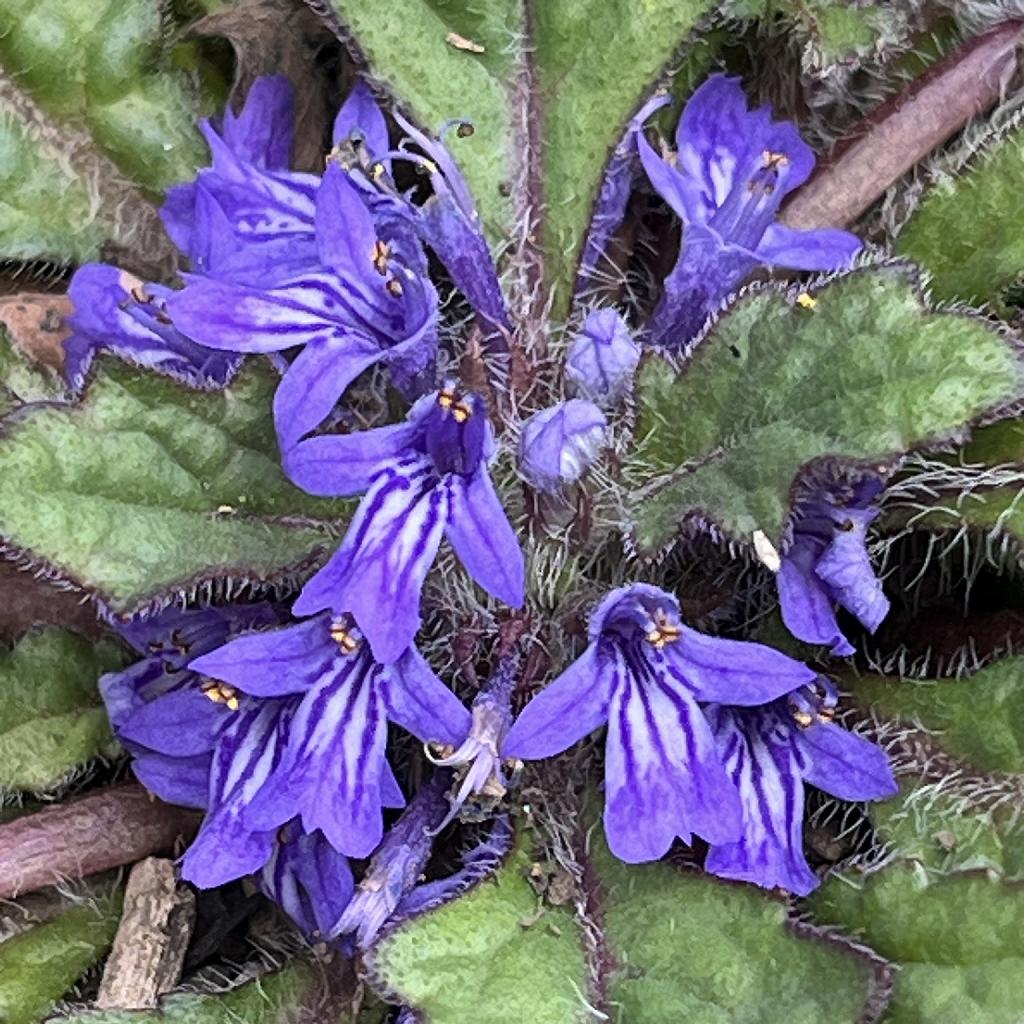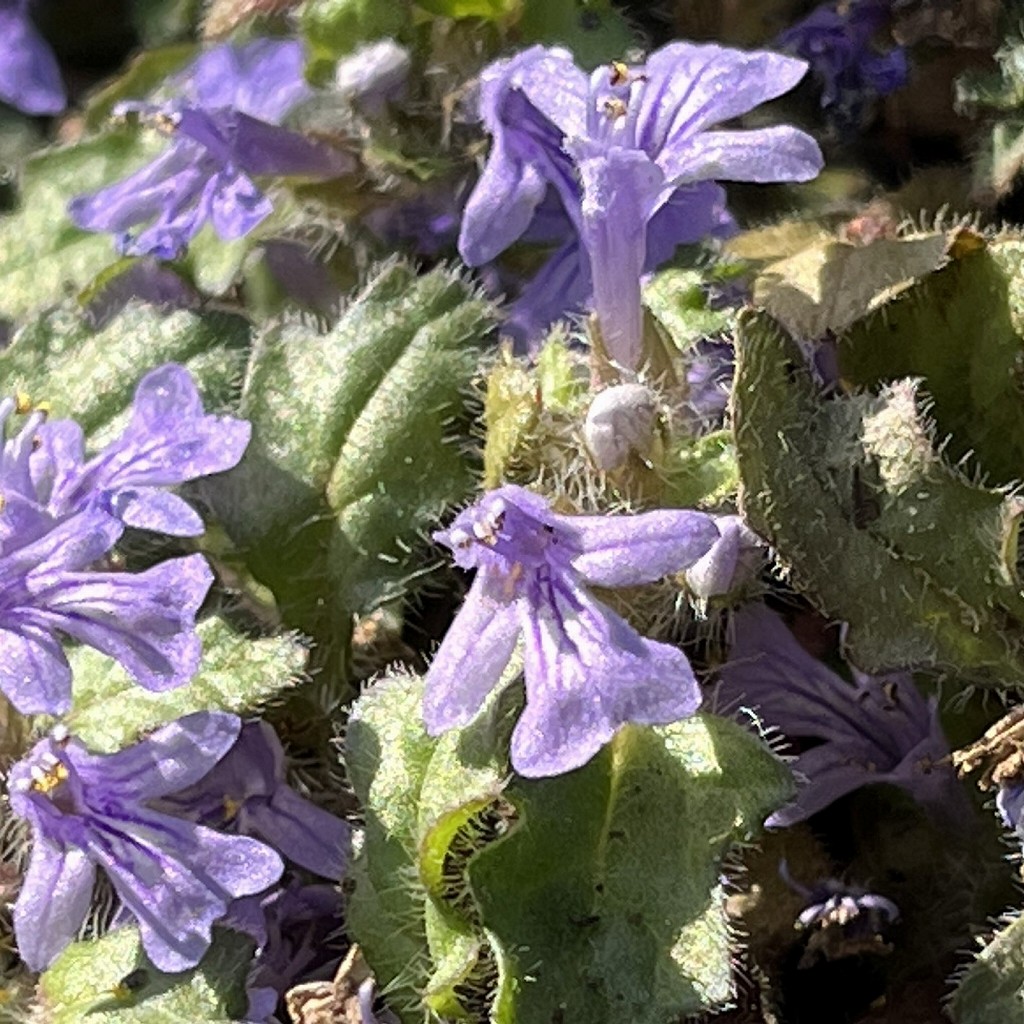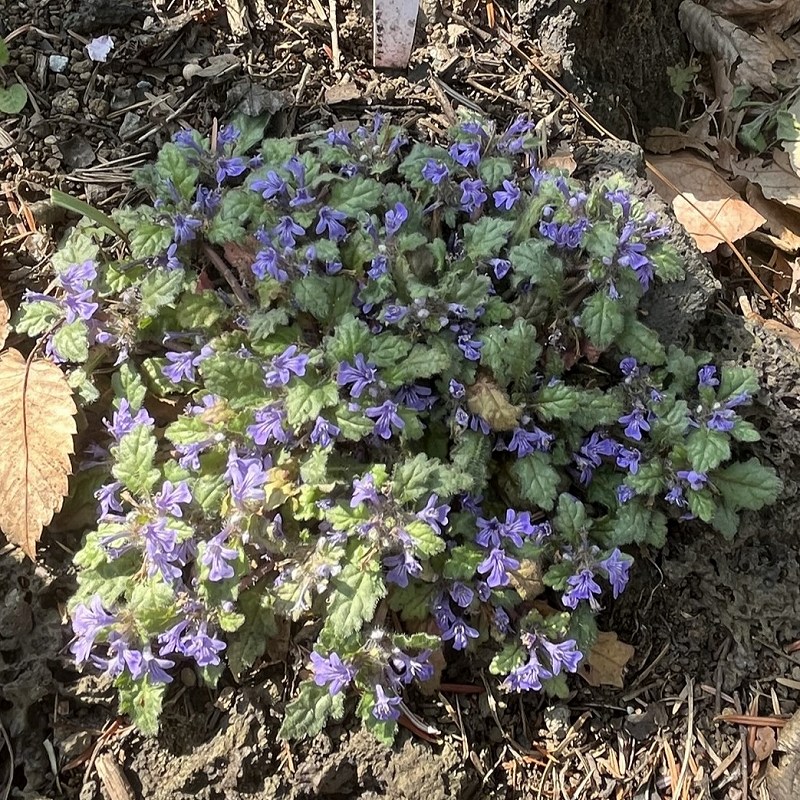キランソウは、地面に張り付くような草姿で目立たないものの、よく見ると可愛い青紫色の唇形花です。花言葉は「あなたを待っています」。
Creeping Bugleweed is a grass that clings to the ground and is not very noticeable, but if you look closely, you will see cute violet lip-shaped flowers. The language of flowers is “waiting for you”.
【仮名】キランソウ, ジゴクノカマノフタ
【和名】金瘡小草, 地獄の釜の蓋
【英名】Creeping Bugleweed
【学名】Ajuga decumbens
【誕生】05/ 24
【開花】03, 04, 05月
【花色】Violet
キランソウ
キランソウの概要

キランソウはシソ科の常緑多年草です。日本では本州、四国、九州、国外では朝鮮半島、中国に分布。地面に張り付くような草姿で目立たないものの、よく見ると可愛い青紫色の唇形花です。その一方で「筋骨草」「地獄の釜の蓋」などの異名も。花言葉は「あなたを待っています」。
キランソウの名前

キランソウの名前の由来は定まっておらず、花の青紫色から「紫藍」、草姿を織物に見立てて「金襴」など諸説あります。和名「金瘡小草」は中国の生薬名。金瘡は刀傷のことで、葉を潰して傷口に塗ったからです。別名「地獄の釜の蓋」は地面に張り付くような草姿を形容したもの。
キランソウの姿形

キランソウの茎は放射状に伸びます。根生葉は縁が波打つ披針形、対生する茎葉は縁がギザギザの楕円形。花は唇形で、上唇が小さく2裂、下唇が大きく3裂、下唇の中央裂片が突き出ます。雄しべは上2本が長く、下2本が短く、雌しべは上下に2裂。花後は丸い4分果が熟します。
キランソウの近縁

キランソウの近縁種「十二単」は本州、四国に分布し、同じように小さな上唇が2裂、大きな下唇が3裂の唇形花。一方、茎がしっかり立ち上がり、白菫色の花が穂状に連なります。「西洋金瘡小草」は原産地が欧州の外来種。十二単のように茎が立ち上がるものの、花は青紫色です。
キランソウの利用

キランソウはフラボノイドのルテオリン、ステロイドのシアステロン、エクジステロンを含有。生の葉は虫刺され、切り傷、やけど、あせも、打撲に用いられます。花の咲いている全草を水で洗って天日で干したものが生薬「筋骨草」。咳止め、解熱、下痢止め、利尿に用いられます。
Creeping Bugleweed

Creeping Bugleweed is an evergreen perennial in the Lamiaceae family. In Japan, it is distributed in Honshu, Shikoku, and Kyushu, and overseas in the Korean Peninsula and China. It is a grass that clings to the ground and is not very noticeable, but if you look closely, you will see cute violet lip-shaped flowers. On the other hand, it also has other nicknames such as “muscle and bone herb” and “The lid of the cauldron of hell.” The language of flowers is “waiting for you”.
The origin of the Japanese name Creeping Bugleweed is unknown. There are various theories about it, such as the blue-purple flowers and the texture of the grass. The kanji in the Japanese name is the name of the herbal medicine in China. It means a sword wound, and this leaf was crushed and applied to the wound. The other name, “The lid of the cauldron of hell,” is a description of the grass that clings to the ground.
Creeping Bugleweed’s stems grow in a radial pattern. The basal leaves are lanceolate with wavy edges, and the opposing stem leaves are oval with jagged edges. The flowers are lip-shaped, with the upper lip being small and 2-lobed, the lower lip being large and 3-lobed, and the central lobed part of the lower lip protruding. The top two stamens are long and the bottom two are short, and the pistils are split into two at the top and bottom. After flowering, round quarter fruits ripen.
“Ajuga nipponensis”, a close relative of Creeping Bugleweed, is distributed in Honshu and Shikoku, and similarly has labial flowers with a small upper lip that has two lobes and a large lower lip that has three lobes. On the other hand, the stems stand up firmly and the white violet flowers grow in spikes. “Ajuga reptans” is an invasive species that originates from Europe. It has erect stems like nipponensis, but its flowers are blue-purple.
Creeping Bugleweed contains the flavonoid luteolin and the steroids cyasteron and ecdysterone. Fresh leaves are used for insect bites, cuts, burns, heat rashes, and bruises. The whole flowering plant is washed with water and dried in the sun to be used as a herbal medicine. It is used as a cough suppressant, antipyretic, antidiarrheal, and diuretic.


